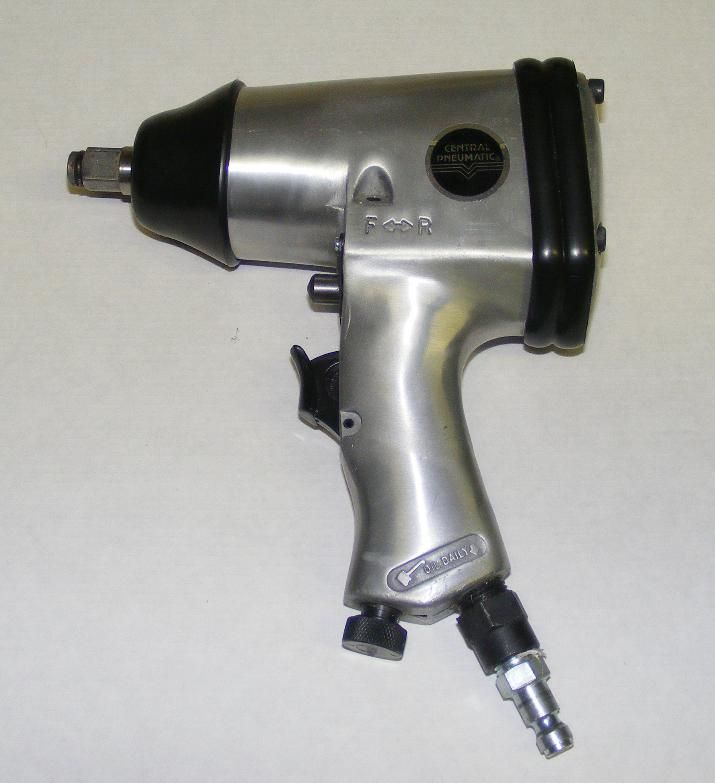Air compressors and pneumatic tools make it possible to achieve in seconds what might take hours to accomplish by hand. When it comes to cutting hard materials and loosening long-tightened bolts, an air-powered tool can instantly perform what would otherwise be impossible. However, it’s important to know the air pressure requirements of a given tool or application.
Contact Us Learn More Find a Dealer Near You
So how do you know how much air pressure is needed for a given application? Air tools made for general use with portable air compressors typically require 0 to 5 cubic feet per minute (cfm) at 70 to 90 pounds per square inch (psi), whereas with larger tools connected to stationary systems, the requirements usually exceed 10 cfm at 100 to 120 psi.
When used intermittently, standard-sized tools for certain applications have specific air pressure requirements. However, it’s important to remember the varying cfm levels should be multiplied by four when continuous usage comes into play.
Here are some of those applications, as well as their corresponding cfm levels:
In car maintenance and repairs or in metalwork, an angle grinder is used for cutting, grinding and buffing. An angle grinder can even be used for sanding surfaces and edges on certain materials, providing the tool is equipped with the right disc. Angle grinders can also be operated with one hand or two — a side handle is featured on most models to allow for the two-handed option. For general applications, a standard 7″ handheld angle grinder requires 5 to 8 cfm at 90 psi.
In construction and home renovation, this tool is used to drive deep — embedding brad nails into wall and door trimmings, as well as other parts of a house or building where regular nails would be deemed visually intrusive. The namesake nails of this tool are thin, headless nails that are far less assuming to the naked eye than regular, flat-headed nails.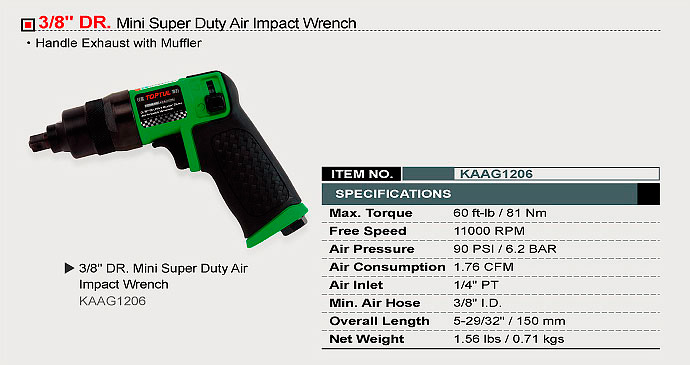 As a relatively lightweight pneumatic tool, a brad nailer generally requires only 0.3 cfm at 90 psi.
As a relatively lightweight pneumatic tool, a brad nailer generally requires only 0.3 cfm at 90 psi.
As a tool that’s sometimes used to cut through metal, an air chisel is one of the heavier-duty handheld pneumatic tools. With its flat, narrow cutting edge, an air chisel can also be used on stone or wood, which makes it a useful tool in the construction and renovation of homes and buildings. Chisels are especially handy for cutting out dovetail joints and mortises when constructing adjoining walls and shelf panels. In general uses, an air chisel requires 3 to 11 cfm at 90 psi.
If there’s one tool that requires power, it’s the cut-off tool, which is made to cut through sheets of metal for crafts work, home or auto maintenance and industrial applications. Whether you need to cut corners off of metal sheets or panels out of metal walls, an air-powered cut-off tool will perform the task in seconds. In a sense, metal appears like paper against the spinning discs on these tools, which require 4 to 10 cfm at 90 psi.
With hard materials, air compressors are especially helpful for drilling, which is widely considered a difficult task among the shaky handed. Thanks to the power and speed of pneumatic drills, the drill bits go in and come out so fast that there’s little time for the clumsy arm and hand moves that could otherwise send things in diagonally instead of straight. Whereas traditional electric-powered drills can only penetrate wood, pneumatic drills have the power to also drill into metal and rock. Whether straight-line or reversible, an air-powered drill requires 3 to 6 cfm at 90 psi.
Before the invention of power tools, few tasks were as exhausting to the palm, wrist and elbow as sanding. While most of the heavy lifting and pressure was concentrated in the sawing, cutting and nailing stages, more actual hand motion was needed just to get each raw-cut surface refined to a nice, smooth finish.
Thankfully, the intensive labor involved in sanding has since been liberated by air-powered dual sanders, which sand and buff in seconds flat.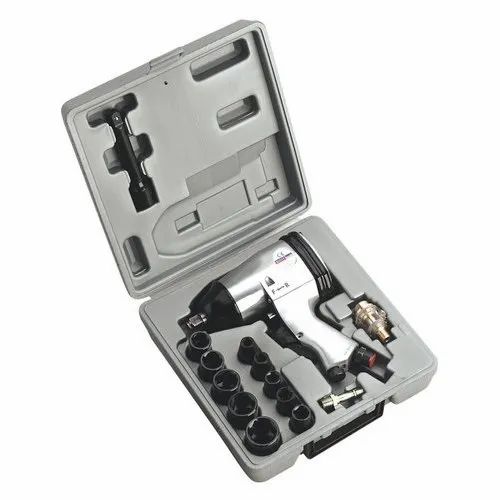 This can all be achieved by simply holding the tool above the surface. Great for metal and woodwork, dual sanders require 11 to 13 cfm at 90 psi.
This can all be achieved by simply holding the tool above the surface. Great for metal and woodwork, dual sanders require 11 to 13 cfm at 90 psi.
When framing the interior of a house, you can go through dozens of nails within a few short minutes. With a framing nailer, you don’t have to keep nails on hand because nail belts load into the tool like bullet rounds into a machine gun. An air-powered framing nailer allows you to fasten boards together by the dozen in only a fraction of the time it would take with a hammer, whether you’re working on the wall frames or rafters. Most amazingly of all, a framing nailer only requires 2.2 cfm at 90 psi.
The moving parts of machinery rely on lubrication, which is the only thing that protects rubbing metal surfaces from friction wear and consequent heat. In vehicles, for instance, grease guns are used to lubricate door hinges and engine parts. Applying grease manually could be a messy operation, but an air-powered grease gun makes the whole job neat and tidy. A grease gun is also a simple and relatively low-pressure pneumatic tool to operate, as it only requires 4 cfm at 90 psi.
A grease gun is also a simple and relatively low-pressure pneumatic tool to operate, as it only requires 4 cfm at 90 psi.
People often stare in wonder at furniture, fixtures and artwork comprised of carved and uniquely cut sheet metal. If you see a metal wall-hanging in the form of a silhouetted sun, moon, flower or animal, chances are it was done by hand with an air metal nibbler. In a similar manner to how X-Acto knives and ion cutters carve shapes out of paper and cardboard, nibblers make cutting metal as easy as cutting paper.
Additionally, nibblers are good for trimming inches off metal surfaces and contouring the corners of otherwise sharp metal ends. When properly guided along sheet metal with minimum arm pressure, an air nibbler requires 4 cfm at 90 psi.
Even the smallest of metal and wood objects are sometimes in need of maintenance. Whether you’d like to grind and smooth out the edges on certain trays or polish and buffer the surface of an old coin, the mini die grinder is an ideal pneumatic tool.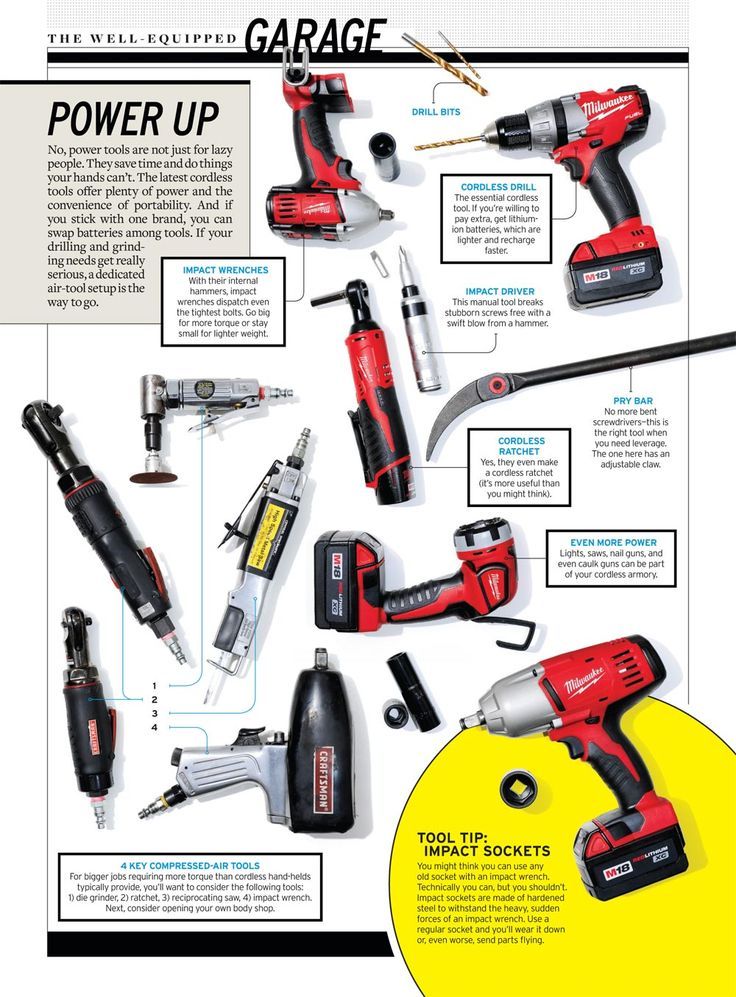 A mini die grinder can also be used for moderate-relief wood stenciling and other crafts work. From sanding tips to buffer wheels, the tool is lightweight regardless of the attachment. A mini die grinder requires 4 to 6 cfm at 90 psi.
A mini die grinder can also be used for moderate-relief wood stenciling and other crafts work. From sanding tips to buffer wheels, the tool is lightweight regardless of the attachment. A mini die grinder requires 4 to 6 cfm at 90 psi.
Even though metals are the strongest material type, they’re still prone to rust, scale and other residues that stem from exposure. Comprised of numerous rattling steel needles, air needle scalers have the power to remove weld slag, rust, paint and various other signs of wear from hard surfaces. If you see welds on a metal bracket, it can all be removed by gently running an air needle scaler back and forth a few times over the surface area. The needle scaler allows you to restore metal surfaces to shiny smoothness in seconds, and it only requires 8 to 16 cfm at 90 psi.
It’s hard to imagine sufficiently smooth wood surfaces without the invention of the orbital air sander. Designed to make the often exhausting task of sanding as easy as waving your hand across a surface, an orbital sander takes the roughness out of wood panels before they’re finally sold as shelves, tables and bookcases.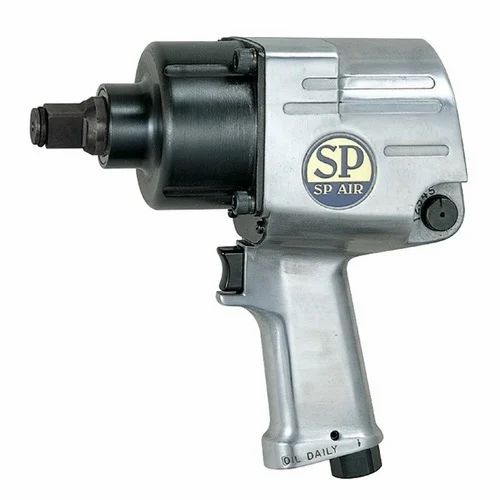
Ideal for artisans and industrial woodworkers alike, the round-disc head of the sander moves in ellipses across each surface, which ensures smoothness by never running over the same spots in the same way twice. With only modest amounts of hand pressure, a pneumatic orbital sander requires 6 to 9 cfm at 90 psi.
Perhaps the greatest of all pneumatic tools is the air paint brush, which eliminates the streaks, splotches and inconsistencies that are often hard to prevent when painting by hand. As one of the most delicate steps in the final stages of vehicle, building and furniture completion, the flow of paint needs to be free of dirt and moisture. These requirements are made possible with a pneumatic airbrush, which allows you to apply layers of paint and glaze at a perfect standard that could never be matched by rollers, brushes or aerosol spray cans. For some of the finest colors and finishes, an airbrush requires 3 to 11.3 cfm at 90 psi.
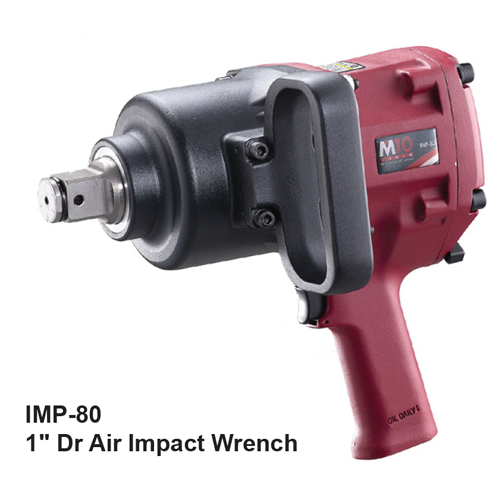
The tightened bolt can be a stubborn beast, especially when it’s been in place since the day the parts in question were fresh off the assembly line. With its short handle and sideways jack, the socket wrench (or ratchet) allows you to dislodge bolts in tight, narrow places that would be hard to reach with a larger, perpendicular tool.
If you’re having problems with your vehicle, for example, an air ratchet makes it easy to remove and replace the problem pieces under the hood without having to take the vehicle in for service. For all the money that home mechanics save with this handy tool, the per-size requirements of a 90 psi impact wrench are as follows:
Some people assume that the rivet went the way of the dodo once welding came along, yet the permanent fastener is still used in plenty of industrial applications. For instance, rivets are preferred in constructions where fastening must be as strong as possible, but where weight must be kept to a minimum, such as with airplanes. A hydraulic riveter can also be used in home construction, such as when attaching corrugated metal roofing. As one of the less consuming pneumatic tools, the hydraulic riveter requires 4 cfm at 90 psi.
A hydraulic riveter can also be used in home construction, such as when attaching corrugated metal roofing. As one of the less consuming pneumatic tools, the hydraulic riveter requires 4 cfm at 90 psi.
On some metal projects, all that’s needed is a clean, simple slice or corner cut, without the metal confetti strips that fall to the wayside during air-shear applications. Contemporary pneumatic saws average 9,000 strokes per minute, which allows for speed and precision when cutting through layers of 16-gauge sheet metal, as well as through plates and strips of aluminum, copper and plastic. From garden ornaments to pipe art, an air-powered speed saw can serve as a vital tool in the construction of various forms of copper and metal crafts, not to mention automotive and industrial applications. In order to run at optimal capacity, an air speed saw requires 5 cfm at 90 psi.
When it comes to heavier-duty metal cutting, you need more than a mere nibbler. With an air shear, you can slice, trim and outline sheet metals for industrial and craft projects. Armed with pistol-grip shears, today’s versions of the pneumatic tool can make roughly 2,600 cuts per minute. Whether you’re working on metal furniture or fixtures, the standard air shear can cut through cold-rolled steels as thick as 20 gauge, as well as 16-gauge sheet metal and 14-gauge aluminum. An ideal tool for metal workshops of all capacities, an air shear requires 8 to 16 cfm at 90 psi.
With an air shear, you can slice, trim and outline sheet metals for industrial and craft projects. Armed with pistol-grip shears, today’s versions of the pneumatic tool can make roughly 2,600 cuts per minute. Whether you’re working on metal furniture or fixtures, the standard air shear can cut through cold-rolled steels as thick as 20 gauge, as well as 16-gauge sheet metal and 14-gauge aluminum. An ideal tool for metal workshops of all capacities, an air shear requires 8 to 16 cfm at 90 psi.
When a screw or bolt seems welded into place, the truth is somewhere in the middle. While time and the elements can make a tight bolt impossible for even the strongest person to unscrew manually, an impact wrench will perform the job in a matter of seconds. If there’s a hitch on the back of your truck for a boat or trailer that you no longer use, that hitch could easily be unbolted — regardless of how much rain and harsh temperatures it has endured — with a 1.5″ impact wrench.
An impact wrench can also be used for applying or removing hubcaps as well as for putting together and taking apart fences, decks and outdoor structures. Best of all, an impact wrench requires virtually no strength or strain on the user’s part, regardless of whether it’s used for reverse or forward applications. Per nozzle size, the requirements of a 90 psi impact wrench are as follows:
Your pneumatic tools and air compressor are rated for cfm. This rating indicates the volume of air required by the air tool or produced by the compressor at a given pressure level. Knowing how much psi you need for an air compressor application will help determine how much cfm the compressor requires to operate your air tools effectively.
Your tools’ cfm requirements can provide an idea of the cfm needed from your air compressor, but you will also need to consider the pressure levels required for the specific function this tool will be performing.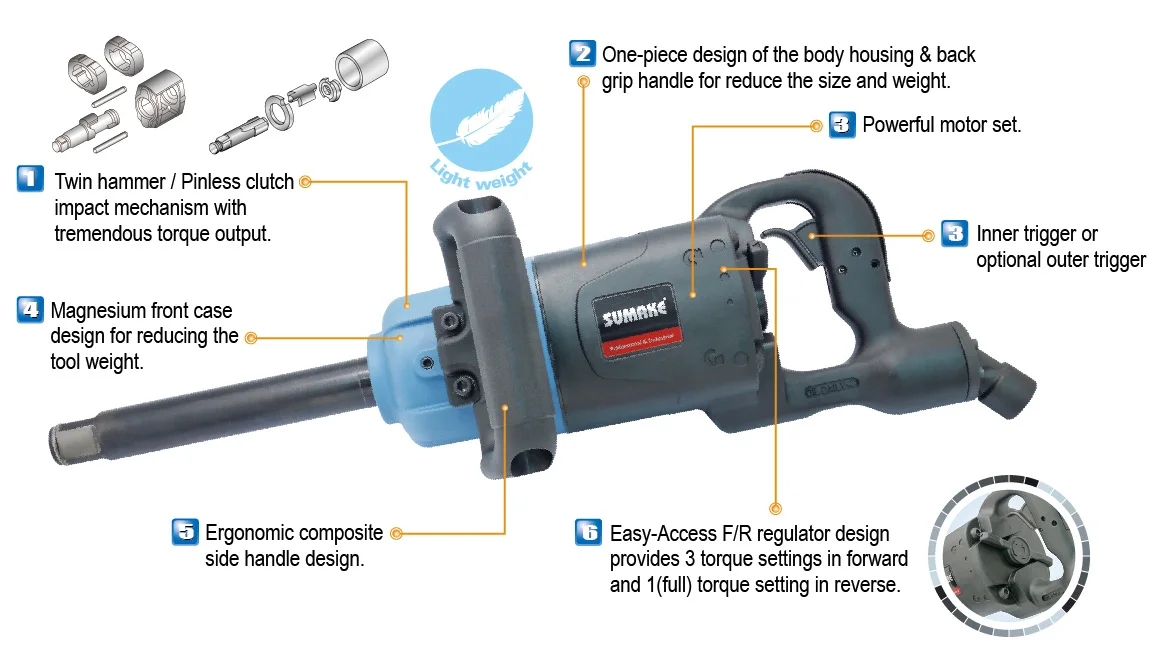 Simply matching your air tool’s rating to the compressor’s rating will not always be enough. That’s where this guide and our handy air compressor cfm chart come in.
Simply matching your air tool’s rating to the compressor’s rating will not always be enough. That’s where this guide and our handy air compressor cfm chart come in.
How much cfm your air compressor needs is determined by a few factors — the type and number of tools you need to power and whether your tools are required for continuous or intermittent use.
Consider the cfm requirements of your specific air tool or tools. The manufacturer’s guidelines should specify this information in the tool manual. If you’re using a single air tool, be it a 1/2″ drill or a 90-pound jackhammer, your air compressor’s minimum cfm rating should be the highest cfm marked for that tool.
It’s crucial to account for the duty cycle when determining your air compressor’s cfm requirements. In this case, the duty cycle refers to the percentage of time an air compressor can run before needing a break to catch up or cool down. The average cfm rating for air tools is usually based on a 25% duty cycle. Because of this, it is often recommended that your compressor’s cfm rating is 1.5 times that of your air tool. This adjustment will prevent your air compressor from overworking.
Because of this, it is often recommended that your compressor’s cfm rating is 1.5 times that of your air tool. This adjustment will prevent your air compressor from overworking.
If your team must use tools for extended periods, consider your compressor’s cfm requirements on a 100% duty cycle. Additional calculations may be necessary, so it is vital to assess what tools you use and how you use them.
Using multiple tools at once will impact your compressor’s cfm requirements. This situation is common in factories and workshops where two or more people work a single job or jobs in close succession. The ability to run multiple tools can significantly boost your team’s effectiveness, so it is essential to plan for this possibility.
If you’re running multiple tools from the same air compressor, you’ll need to add the individual cfm ratings of each tool to determine your compressor’s total cfm requirement. For example, a team that simultaneously uses a 2″ grinder that requires 30 cfm and a 1″ impact wrench that requires 60 cfm will have a total demand of 90 cfm.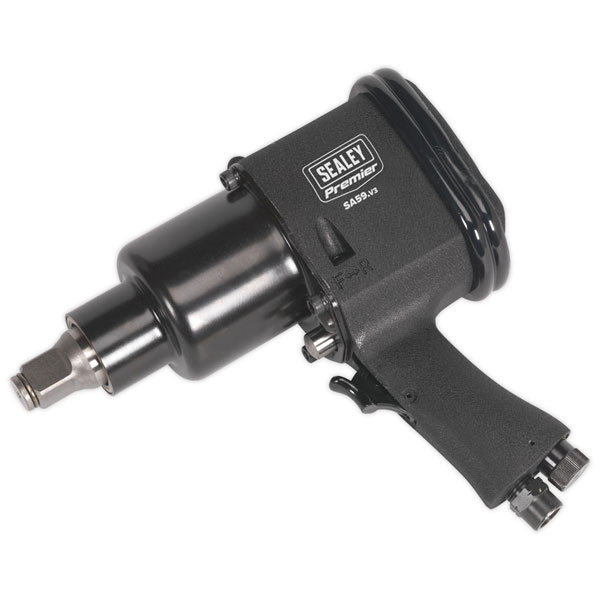 This means the workers must have an air compressor that reliably produces 90 cfm of air to power both devices.
This means the workers must have an air compressor that reliably produces 90 cfm of air to power both devices.
In this example, the air tools’ cfm ratings are already calculated at a 100% duty cycle. It is important to consider whether your tools will be used continuously or intermittently, especially when using multiple devices at once. If you are aiming for continuous operation of more than one tool, you may need to multiply the total cfm by 4 if the individual tools are only rated on a 25% duty cycle. Using multiple tools continuously can require a significant volume of air.
How you use your tools is vital. When determining your air compressor’s cfm needs, it is important to examine how you and your team operate daily. Do you work in quick bursts with short breaks, or must you use your tools for lengthy periods? Does the air compressor have adequate time in between use periods to catch up and cool down?
Asking yourself these or similar questions will ensure you operate your tools with their intended use in mind. If your application requires you to run air tools for an extended period, you must calculate your air compressor’s cfm requirements on a 100% duty cycle. In contrast, general air tools used for intermittent bursts may get by with a less powerful but more cost-effective compressor.
If your application requires you to run air tools for an extended period, you must calculate your air compressor’s cfm requirements on a 100% duty cycle. In contrast, general air tools used for intermittent bursts may get by with a less powerful but more cost-effective compressor.
See how much cfm you would need to operate some of the most common tools at peak performance. This air compressor cfm chart outlines the air pressure required for particular applications.
From grinding, chiseling and drilling to sanding, painting and greasing, it’s crucial to have an air compressor that can provide the right amount of air pressure for each application. Whether you run an auto repair shop or a metal-working studio, or you simply do metal or woodwork in your home garage, Quincy Compressor supplies numerous machines that cover the needed specifications for a vast range of pneumatic tools.
Since 1920, Quincy has been at the forefront of all the latest innovations in air compressor technology. Throughout the United States and abroad, our machines and tools have been used at factories, assembly plants, repair shops and in private workshops. For operations large and small, Quincy air compressors have allowed mechanics, technicians and artisans to get optimal results with just the right pressure for each application.
Quincy compressors have saved money and time while relieving strain and providing optimal results for companies, work teams and private users, and our products can do the same for you. If your equipment arsenal has given you lackluster results and you need a system that provides moisture-free compressed air for various tools, check out the Quincy products page to learn more about our offerings. Then, contact our sales representatives who can assist you in getting the air compressor that will allow you to complete your necessary tasks with ease.
Last Updated on October 26, 2021 at 3:10 pm
Contact Us Learn More Find a Dealer Near You
Impact Wrenches are the workhorses in the automotive industry.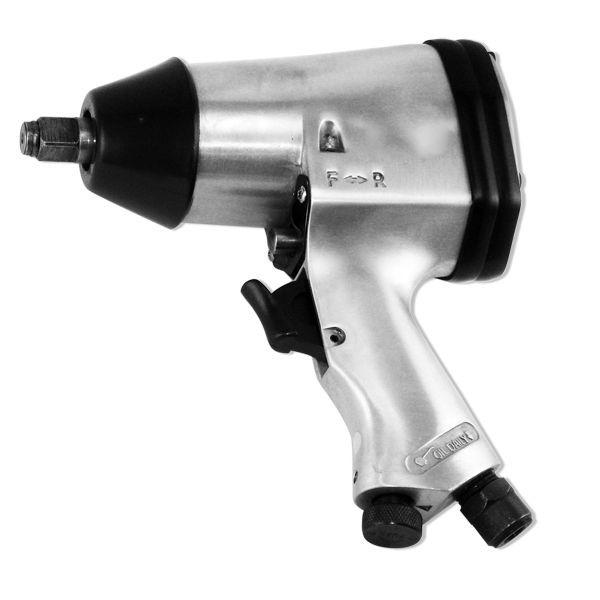 Be it the assembling plants or garages/workshops, you can see dozens of wrenches in action. While there are powerful and reliable Electric Impact Wrenches, Pneumatic Impact Wrenches are the preferred choice in many workshops. And if it is a pneumatic tool, then you also need an air compressor to “power” the tool. If you are planning to buy an air compressor for your garage/workshop, you might be wondering “What Size Air Compressor Do I Need for Impact Wrench?”.
Be it the assembling plants or garages/workshops, you can see dozens of wrenches in action. While there are powerful and reliable Electric Impact Wrenches, Pneumatic Impact Wrenches are the preferred choice in many workshops. And if it is a pneumatic tool, then you also need an air compressor to “power” the tool. If you are planning to buy an air compressor for your garage/workshop, you might be wondering “What Size Air Compressor Do I Need for Impact Wrench?”.
In this guide, we will see all the factors you need to consider when picking an air compressor to run an impact wrench. After that, we will see how the size of the impact wrench or how often you use it affects the choice of air compressor.
Finally, we will see some generic answers to the important question: What Size Air Compressor Do I Need for Impact Wrench?
Outline
An Impact Wrench is perhaps the most common and popular air tool in an automotive workshop.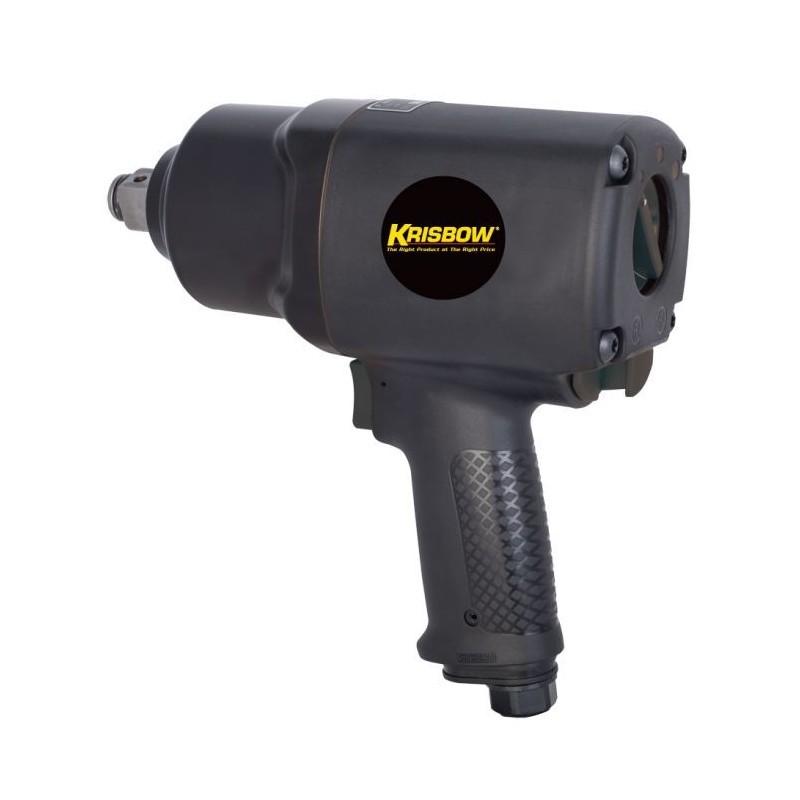 It is also known as Impact Gun or Rattle Gun.
It is also known as Impact Gun or Rattle Gun.
A typical application of the Impact Wrench is to remove or fit lug nuts on a car to remove or replace tires. These lug nuts often need a lot of torque to loosen or tighten them and Impact Wrenches can deliver that.
While there are electric impact wrenches, automotive workshops prefer Air Impact Wrenches (among other air tools). Some reasons for this choice are:
An Air Impact Wrench can rotate in clockwise as well as counter-clockwise directions. A valve in the tool controls the amount of torque it applies.
Speaking of torque, an impact wrench’s torque is dependent on the tool as well as the pressure of air fed by the air compressor.
Air Tools such as Impact Wrenches, Drills, Grinders, etc. operate using high-pressure compressed air..jpg) The system usually consists of an air compressor, pressure regulator, air hose, and different types of air compressor fittings.
The system usually consists of an air compressor, pressure regulator, air hose, and different types of air compressor fittings.
An electric motor compresses air and stores it in a metal tank. With the help of a pressure regulator, you can control the amount of air pressure the tank outputs.
Now, let us focus on the main question in the discussion; what size air compressor do I need for impact wrench? To answer this question, we need to take a look at a couple of important things.
The first one is the drive size of the Impact Wrench. Air Impact Wrenches are available in 4 common drive sizes:
Impact Wrenches with different drive sizes have different airflow requirements. Speaking of airflow, we measure it in cubic feet per minute, or CFM. Most air tools require a certain CFM of air at 90 psi pressure while running free.
Here are the typical CFM ratings for different drive sizes.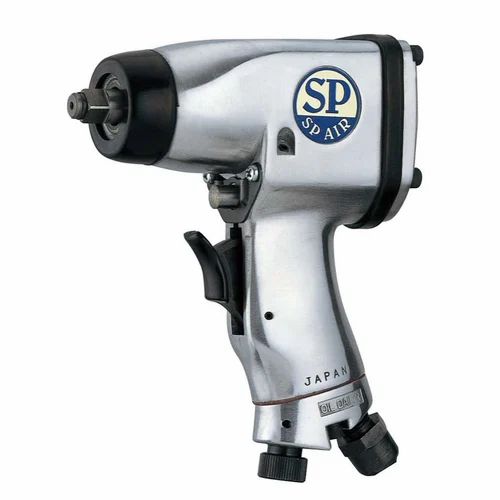
So, it is important that you check the size of your impact wrench and its minimum CFM ratings recommended by the manufacturer.
Note that these are the minimum CFM values. The air compressor you choose must deliver at least this amount of airflow at 90 psi pressure for the impact wrench to run freely.
This means the air compressor must have a slightly higher airflow than this value. But how much more?
As a simple rule of thumb, the airflow from the air compressor must be at least 3/2 times the minimum requirement of the impact wrench.
For example, a 1/2″ drive Impact wrench usually has a requirement of about 5 CFM airflow at 90 psi. So, the airflow rating of the air compressor at 90 psi should be 3/2 * 5 = 7.5 CFM.
The size of the air compressor’s tank determines how long you can use the impact wrench continuously without switching on the motor.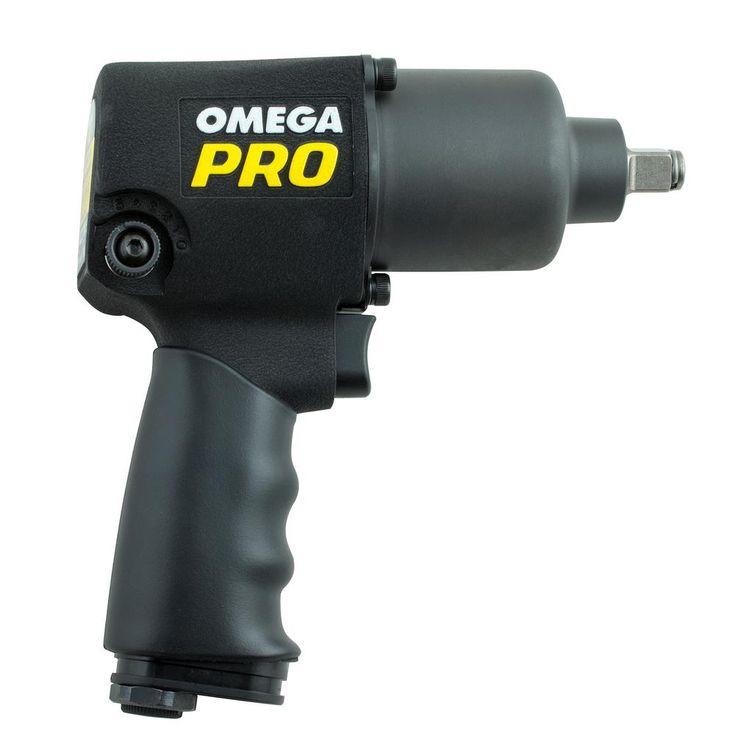
You can find air compressor tanks that can hold 80 – 100 gallons of air. At the same time, there are also smaller tank sizes such as 6 gallons and 16 gallons.
So, what’s the optimum air compressor tank size? This depends on how long you want to use the air tool but as a rule of thumb, we usually recommend an air compressor tank size of at least 5 to 6 times the airflow requirement of the tool.
For example, if the impact wrench has an airflow requirement of 5 CFM, then the tank size of the air compressor must be at least 25 to 30 liters (6 – 8 gallons).
In this case, you can expect the impact wrench to operate for about an hour or an hour and a half.
Note that these are just recommendations. If you run multiple tools and use air tools for a lot of jobs, then a larger tank size will definitely be beneficial.
Let us now see all the important things you need to consider while purchasing an air compressor.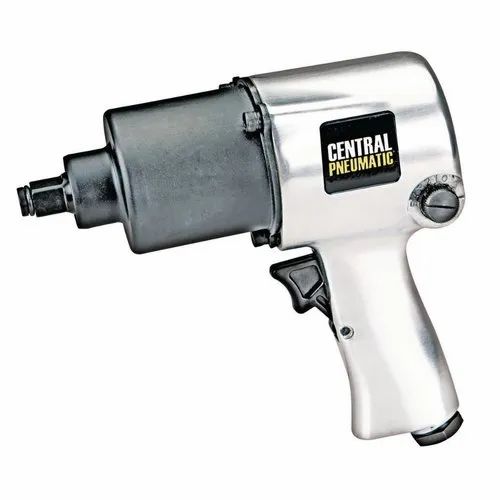
As we mentioned earlier, the drive size of the air tool, which is an Impact Wrench in this discussion, plays an important role in determining the air compressor you need.
Impact Wrenches with smaller drive sizes (3/8” or 1/2″) need less airflow than tools with larger drive sizes (3/4” or 1”).
We measure the airflow in CFM (cubic feet per minute). Check the CFM ratings of the impact wrench as well as the air compressor.
If you want to use the Impact Wrench for a continuously long duration, then you need an air compressor that can hold a large volume of air.
So, the tank size of the air compressor becomes crucial. You can get air compressors with small tanks (2 gallons), medium size tanks (6 – 16 gallons), and large tanks (more than 30 gallons).
Another important factor that impacts your buying decision of an air compressor is the number of air tools you use simultaneously. If you own or operate a large garage or workshop where you have a crew that works on several vehicles at the same time, then it is better to invest in a large industrial air compressor.
They have the airflow capacity to feed multiple tools and also a larger tank that can hold significantly large volumes of air.
Air compressors and air tools are loud machines. Irrespective of the size of the garage, we recommend you place the air compressor far away from the main work area and run hoses through the workshop.
If you have a small garage, then consider building a tiny shed outside the garage to house the air compressor so that we keep its noise to a minimum level.
Another important thing is the size of the air compressor. If you have a large workshop with separate space to put the air compressor, then you can get away with a large-size air compressor.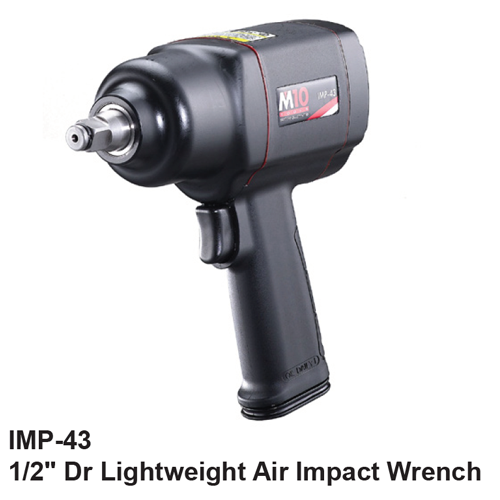
But for small workshops or garages with already congested space, a small air compressor is a better choice.
Automotive and construction are the two main “types” of work that use air tools. For smaller jobs such as painting or drilling, you don’t need a super powerful air compressor.
But for using high torque air tools such as impact wrenches, hammers, etc. you need a strong air compressor.
Air Impact Wrenches are very important tools in automotive garages and workshops. Be it in small garages or large workshops, impact wrenches are a necessity to finish the job easily, efficiently, and effortlessly.
But if you are wondering, what size air compressor do I need for impact wrench, then we covered this in this guide. We saw some basics of impact wrenches and air compressors.
After that, we saw the factors that determine the size of the air compressor. Finally, we gave a couple of simple ways to calculate the right air compressor you need for “powering” an impact wrench.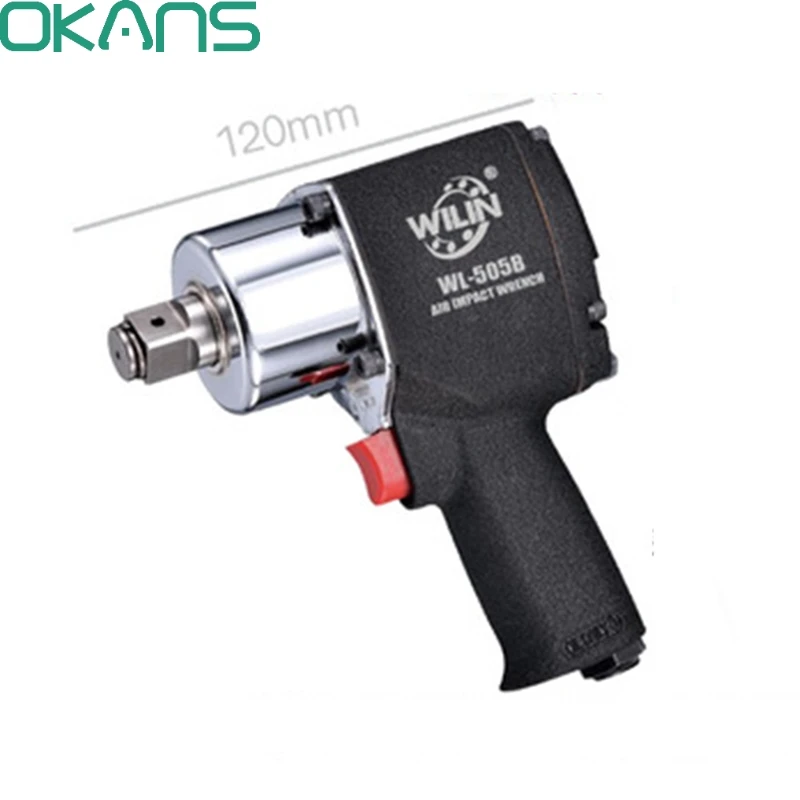
Before choosing an industrial compressor for a wrench, you need to decide on the pneumatic wrench itself. The most important technical characteristic of a pneumatic wrench is torque. The magnitude of the torque directly affects the nature of those operations that can be performed using a given wrench, as well as the time they are performed. Obviously, the higher the torque, the more you can tighten the threaded connection (or, conversely, unscrew the "stuck" nut). But on the other hand, the use of an overly powerful wrench can lead to damage to the threaded connection (thread stripping). Therefore, it is very important that the torque correspond to the specifics of the tasks being solved.
If we give a numerical assessment of the torque parameters, then for pneumatic wrenches it lies in the range from several tens to several thousand Nm. A torque wrench designed for household and semi-professional tasks must have a torque value of 200 Nm to 600 Nm. For more serious work, nutrunners with a torque of 1000 Nm and above are needed.
For more serious work, nutrunners with a torque of 1000 Nm and above are needed.
The second important technical characteristic of the wrench also depends on the amount of torque - the landing size of the square (spindle). Everything is simple here: the higher the torque, the larger the square. The standard range of square shank sizes is measured in inches. The most common spindle sizes are ½, ¾ and 1 inch. As a rule, for solving household and semi-professional tasks, nutrunners with a square of ½ inch are used, and in industry with squares of ¾ and 1 inch.
You can consider the choice of spindle square size on the other hand. According to wrench manufacturers, the size of the square is related to the size of the nut (bolt head) that needs to be unscrewed / screwed:
- if the size of the “turnkey” nut is from 10 to 21 mm, then a wrench with a ½ inch square will do;
- if the size of the "turnkey" nut is from 24 to 36 mm, then a wrench with a ¾ inch square will do;
- if the size of the “turnkey” nut is from 41 mm, then a wrench with a square of 1 inch will do.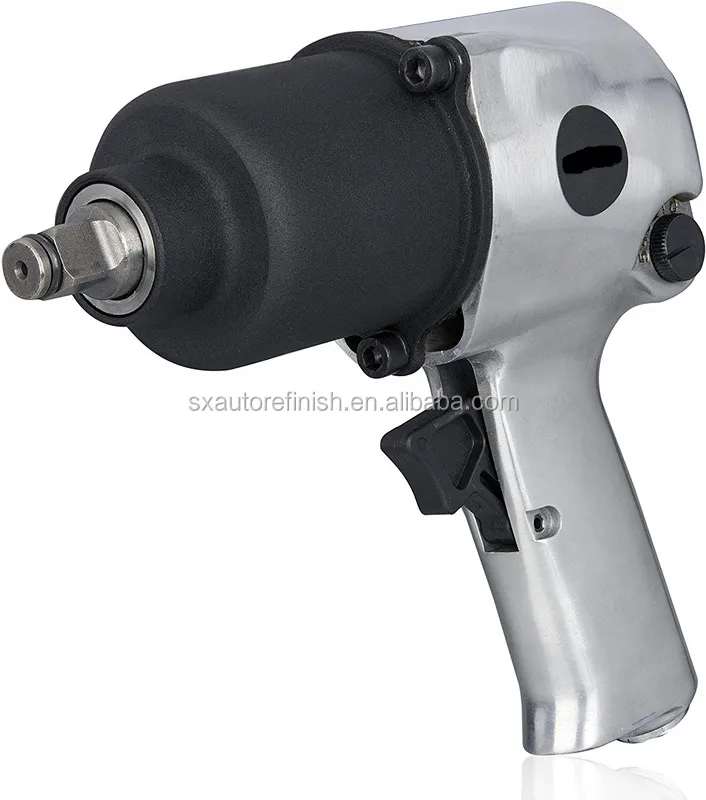
The third important technical characteristic of the impact wrench is the air flow. It also largely depends on the torque: the higher the torque, the greater the air consumption. ½ inch square nutrunners have an air flow rate of 150-250 l/min; for more powerful nutrunners from 300 l/min and above.
As an example, here is a summary table of the main technical characteristics of impact wrenches from one of the world's well-known manufacturers of these products.
| Product name | Torque, Nm | Air consumption, l/min |
| Impact wrench ½" | 270 - 810 | 170 - 230 |
| Impact wrench ¾" | 680 - 1600 | 270 - 340 |
| Impact wrench 1" | 1630 - 4070 | 800 - 1130 |
General approaches to compressor selection
After choosing a wrench, proceed to the choice of an air compressor.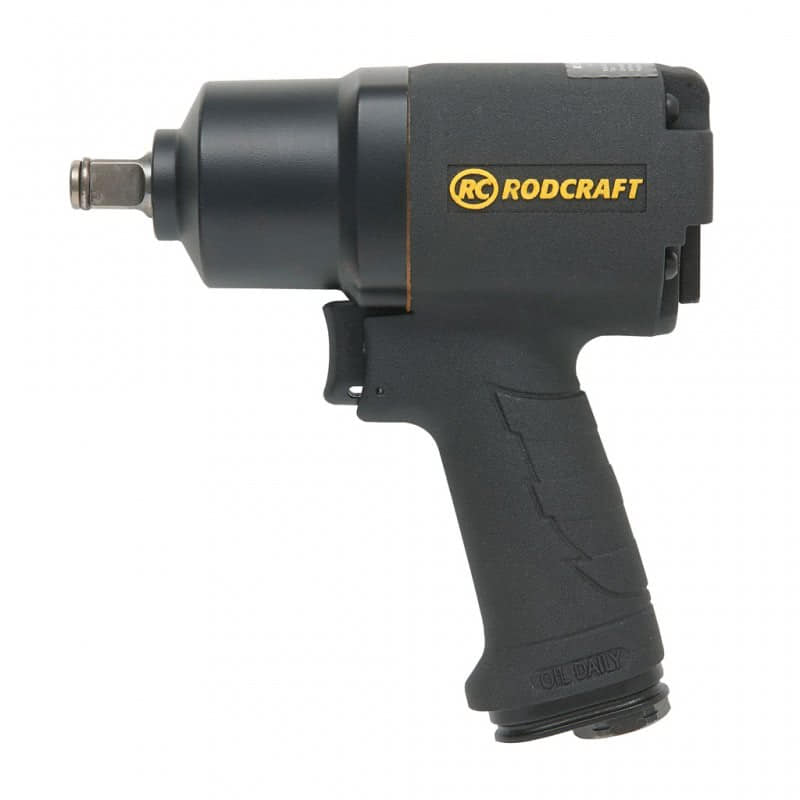 The compressor to which the impact wrench will be connected must meet two requirements:
The compressor to which the impact wrench will be connected must meet two requirements:
- provide the required working pressure of compressed air;
- provide the required compressed air consumption.
The standard operating pressure required for most nutrunners on the market is 6.2-6.5 bar. Therefore, the compressor that is planned to be used for operation must have a maximum operating pressure of 10 bar (or, in other words, operate in the pressure range of 8-10 bar).
How to choose a compressor for service stations in terms of performance? In the passport of the wrench, its air consumption is indicated. However, in practical work, the wrench is not used constantly, but with certain interruptions. Therefore, each pneumatic tool (including a wrench) has its own so-called utilization factor. In our case, it is 0.2-0.25. Therefore, if the passport of the wrench indicates that its air consumption is 300 l / min, then for real calculations it is necessary to take into account the value of 60-75 l / min.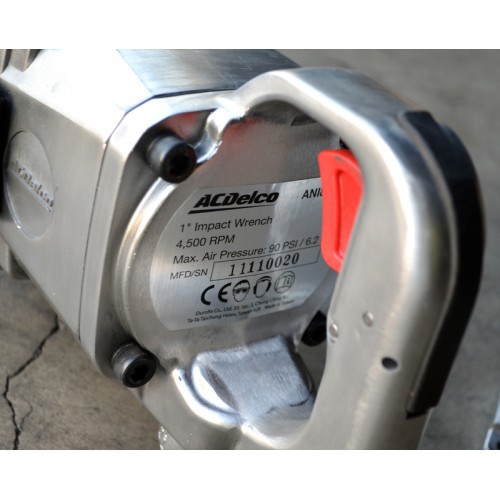
If you plan to use several nutrunners, you must also consider the possibility of their simultaneous operation. It is determined by the coefficient of synchronism of the equipment, the values of which are given in the table.
| Number of compressed air consumers | one | 2 | 3 | four | 5 |
| Equipment Synchronization Factor | 1.0 | 0.95 | 0.91 | 0.87 | 0.84 |
Thus, the previously calculated value of the total compressed air consumption must be multiplied by the corresponding synchronism factor. And already on the basis of the obtained value, choose a production air compressor.
The further procedure for choosing a compressor is exactly the same as when choosing it for connecting any other equipment. There are two types of compressors: piston and screw. If the air flow rate is up to 1000-1200 l / min, then a piston compressor can be used; if higher, it is better to use a screw compressor.
There are two types of compressors: piston and screw. If the air flow rate is up to 1000-1200 l / min, then a piston compressor can be used; if higher, it is better to use a screw compressor.
On the other hand, the choice of compressor type also depends on the nature of the work: if it is one- or two-shift, then a piston compressor is quite suitable; if the operating mode is round-the-clock, then a screw compressor is needed.
Nutrunner practical questions
The first question that comes up most often is what quality of compressed air is needed to operate an air impact wrench? If in production it is possible to use dry compressed air to power the wrench, great. If this is not possible, then you can do without a refrigeration dryer. In this case, it is enough to install a filter-moisture-oil separator with a built-in pressure regulator and a lubricator in the pneumatic line. The oil/moisture separator will remove moisture, the regulator will provide the required compressed air pressure, and the lubricator will lubricate the wrench.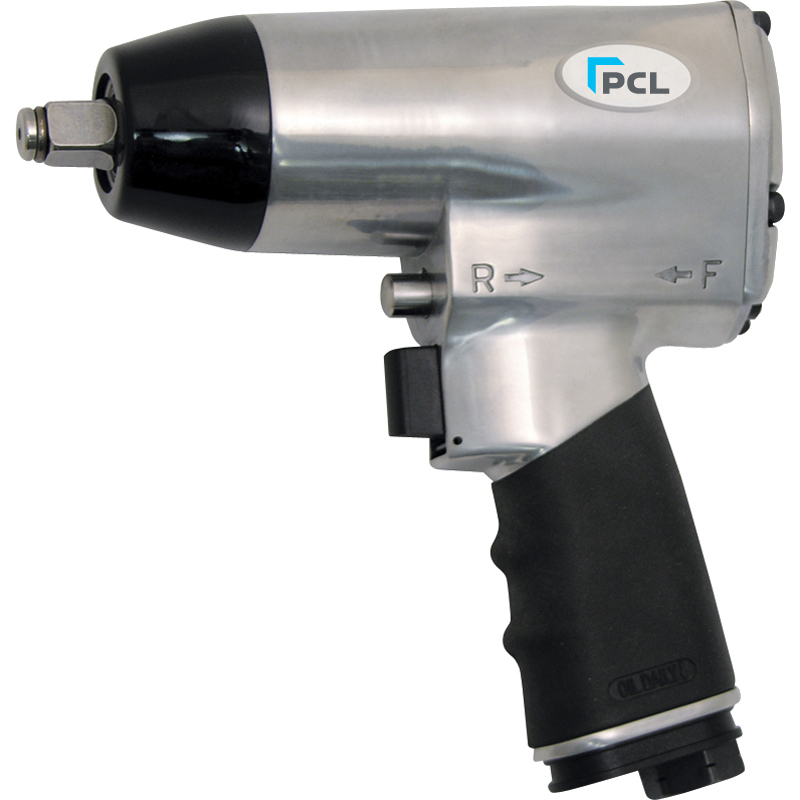
By the way, if it is possible to provide the wrench with dry compressed air in production, then it is still necessary to install an air preparation unit in front of it. In this case, it includes a pressure regulator and a lubricator.
The next question concerns the installation of an air handling unit in the pneumatic line. Whatever the geometry of the pneumatic line, there are two main ways to install air handling units in it: above the main pipe and below the main pipe.
What is the advantage of installing the unit above the pipe? In this case, the vertical outlet upwards, to which the air preparation unit is then attached, naturally prevents condensate from entering the unit.
If the block is installed under the main pipe, then a vertical downward bend is made from the pipe, into which a tee cuts, and a block is connected from this tee through a separate pipe. And in order to exclude the "bay" of the block with condensate, the vertical outlet from the main pipe is continued even lower, and completed with a valve to remove condensate.
In both cases, the connection of the air preparation unit to the pneumatic line is made through a shut-off ball valve. This will allow, if necessary, to quickly disconnect the unit from the pipeline.
Most air preparation units are equipped with a Y-shaped connector, which makes it possible to connect two nutrunners to them at once. And to ensure high-quality lubrication of the wrench, the length of the flexible hose should not exceed 5 meters.Return to list
Today CJSC "Volzhskiy shlifmaterial - Volga" is a seller of pneumatic and electric tools. Having contractual relations with a number of manufacturers of pneumatic and power tools, we can offer you the following tools from the following manufacturers ((KAWASAKI, PFERD, Daewoo, FUJI, BOSCH, HITACHI, METABO, ARCHIMEDES, Rezolit and many others):
a worthy alternative to a wrench. A wrench allows you to quickly tighten nuts and bolts, quickly coping even with very rusty, clogged specimens.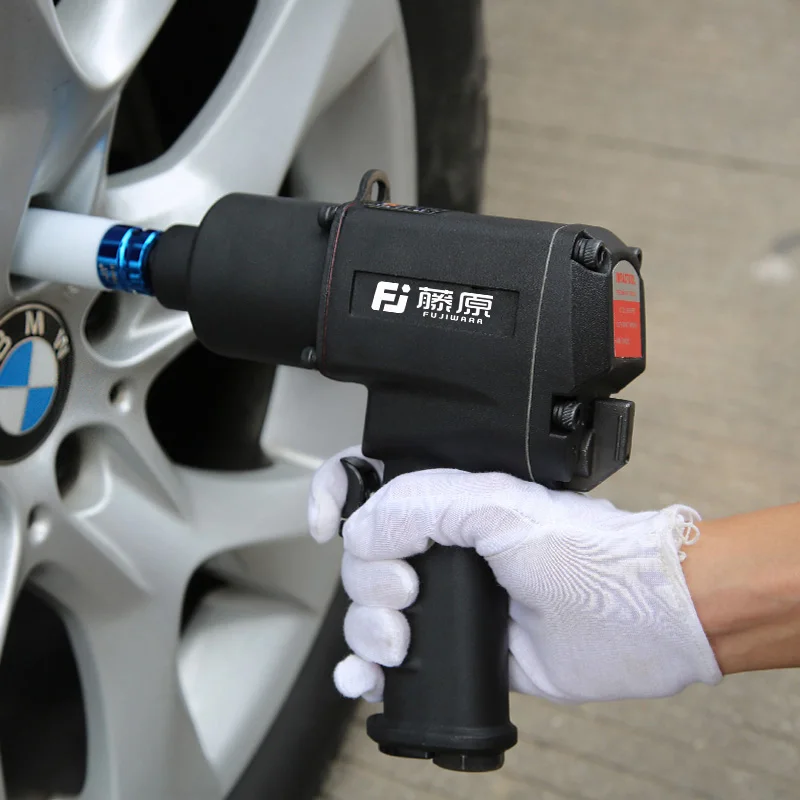 A wrench, unlike conventional assembly with a wrench, allows you to make the structure stronger and more durable. Therefore, the purchase of a wrench for workshops, auto repair shops (wide ½-inch wrenches have become widespread), in mechanical engineering, automotive or other industries, it becomes a must.0003
A wrench, unlike conventional assembly with a wrench, allows you to make the structure stronger and more durable. Therefore, the purchase of a wrench for workshops, auto repair shops (wide ½-inch wrenches have become widespread), in mechanical engineering, automotive or other industries, it becomes a must.0003
At operating pressure 6.3 atm. A Nutdriver with a ½ inch square has an air consumption of 110 to 300 l/m, which is the nameplate data. It is not recommended to use an air hose whose diameter will supply insufficient air, as a result of which there will be a loss of power, if the supply is excessive, the mechanism will wear out (it is also recommended to use a lubricator for drills with a ½ inch square to lubricate rubbing parts, which allows you to increase tool life).
The principle of operation of a pneumatic wrench: compressed air from an external compressor drives the rotary mechanism and the head (cartridge). Impact wrench has a higher power than its non-impact counterpart, and is convenient when working with tight bolted connections.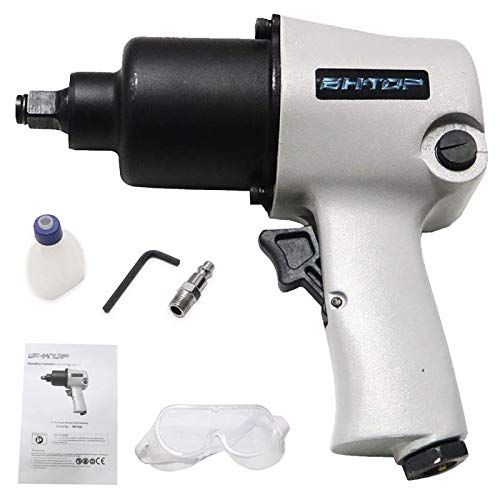 An impact wrench should be used in applications where there is a risk of accidental thread stripping. This wrench will allow you to do the job "softly" without damage.
An impact wrench should be used in applications where there is a risk of accidental thread stripping. This wrench will allow you to do the job "softly" without damage.
When choosing a pneumatic impact wrench, you should pay attention to the technical parameters of the product: tightening torque and rotation speed. The first parameter determines the level of force with which the fasteners will be twisted, and can be in the range of 30-3000 Nm. The higher the spindle speed, the larger fasteners the tool can work with. Usually it varies between 3 - 8 thousand rpm.
Air impact wrenches with ½ inch landing are also divided into angular and straight. The straight wrench resembles a pistol in its shape and is available with various impact designs.
Here you can buy a pneumatic wrench, a set of impact sockets for it, extension cords, universal joints, air hoses, as well as compressors, filters, lubricators, fittings and much more. We will help you to fully equip your workplace.
By contacting us, you can purchase products from us both from Russian manufacturers of pneumatic tools (Tomsk Electromechanical Plant, Pneumatic Tool Plant and Hydrounit Plant) and imported (Taiwan, Korea, Japan, USA, Poland, Germany, Italy, etc.)
Before choosing an industrial compressor for a nutrunner, it is necessary to decide on the pneumatic nutrunner itself. The most important technical characteristic of a pneumatic wrench is torque. The magnitude of the torque directly affects the nature of those operations that can be performed using a given wrench, as well as the time they are performed. Obviously, the higher the torque, the more you can tighten the threaded connection (or, conversely, unscrew the "stuck" nut). But on the other hand, the use of an overly powerful wrench can lead to damage to the threaded connection (thread stripping). Therefore, it is very important that the torque correspond to the specifics of the tasks being solved.
If we give a numerical assessment of the torque parameters, then for pneumatic wrenches it lies in the range from several tens to several thousand Nm.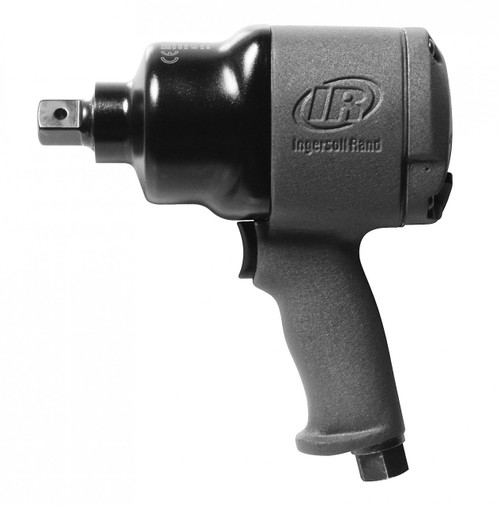 A torque wrench designed for household and semi-professional tasks must have a torque value of 200 Nm to 600 Nm. For more serious work, nutrunners with a torque of 1000 Nm and above are needed.
A torque wrench designed for household and semi-professional tasks must have a torque value of 200 Nm to 600 Nm. For more serious work, nutrunners with a torque of 1000 Nm and above are needed.
The second important technical characteristic of the wrench also depends on the amount of torque - the landing size of the square (spindle). Everything is simple here: the higher the torque, the larger the square. The standard range of square shank sizes is measured in inches. The most common spindle sizes are ½, ¾ and 1 inch. As a rule, for solving household and semi-professional tasks, nutrunners with a square of ½ inch are used, and in industry with squares of ¾ and 1 inch.
You can consider the choice of spindle square size on the other hand. According to wrench manufacturers, the size of the square is related to the size of the nut (bolt head) that needs to be unscrewed / wrapped:
- if the size of the “turnkey” nut is from 10 to 21 mm, then a wrench with a ½ inch square will do;
- if the size of the wrench nut is from 24 to 36 mm, then a wrench with a ¾ inch square will do;
- if the size of the wrench nut is from 41 mm, then a wrench with a square of 1 inch will do.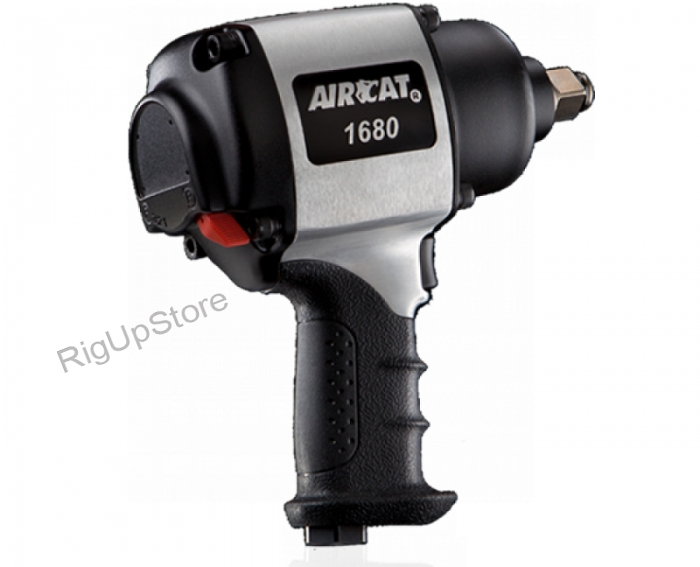
The third important technical characteristic of the impact wrench is the air flow. It also largely depends on the torque: the higher the torque, the greater the air consumption. 1/2" square nutrunners have an air flow of 150-250 l/min; with more powerful nutrunners from 300 l/min and above.
As an example, here is a summary table of the main technical characteristics of impact wrenches from one of the world's well-known manufacturers of these products.
| Product name | Torque, Nm | Air flow, l/min |
| Nut wrench ½" | 270 – 810 | 170 – 230 |
| Nut wrench ¾" | 680 – 1600 | 270 – 340 |
| Impact wrench 1" | 1630 – 4070 | 800 – 1130 |
General Approaches to Compressor Selection
After selecting the wrench, proceed to the selection of the air compressor.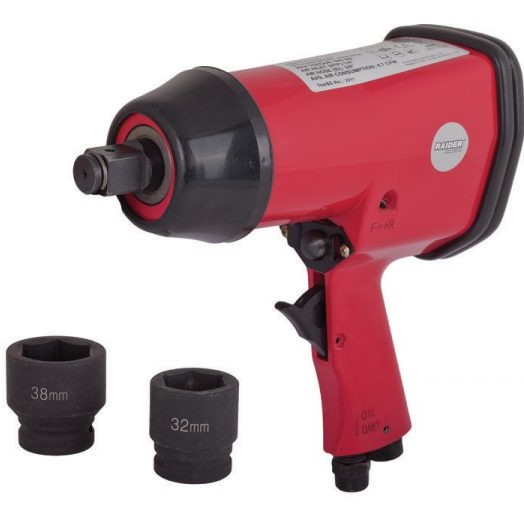 The compressor to which the impact wrench will be connected must meet two requirements:
The compressor to which the impact wrench will be connected must meet two requirements:
- provide the required working pressure of compressed air;
- provide the required compressed air flow.
The standard operating pressure required for most nutrunners on the market is 6.2-6.5 bar. Therefore, the compressor that is planned to be used for operation must have a maximum operating pressure of 10 bar (or, in other words, operate in the pressure range of 8-10 bar).
How to choose a compressor for service stations in terms of performance? In the passport of the wrench, its air consumption is indicated. However, in practical work, the wrench is not used constantly, but with certain interruptions. Therefore, each pneumatic tool (including a wrench) has its own so-called utilization factor. In our case, it is 0.2-0.25. Therefore, if the passport of the wrench indicates that its air consumption is 300 l / min, then for real calculations it is necessary to take into account the value of 60-75 l / min.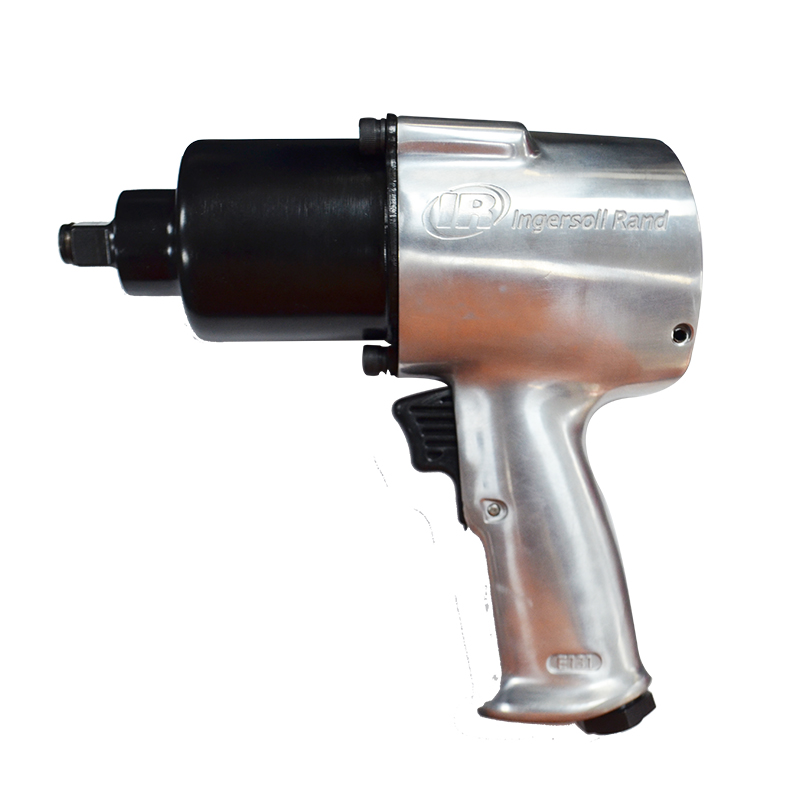
If you plan to use several nutrunners, you must also consider the possibility of their simultaneous operation. It is determined by the coefficient of synchronism of equipment operation, the values of which are given in the table.
| Number of compressed air consumers | 1 | 2 | 3 | 4 | 5 |
| Equipment synchronism factor | 1.0 | 0.95 | 0.91 | 0.87 | 0.84 |
Therefore, the previously calculated total compressed air consumption must be multiplied by the corresponding synchronism factor. And already on the basis of the obtained value, choose a production air compressor.
The further procedure for choosing a compressor is exactly the same as when choosing it for connecting any other equipment. There are two types of compressors: piston and screw. If the air flow rate is up to 1000-1200 l / min, then a piston compressor can be used; if higher, it is better to use a screw compressor.
If the air flow rate is up to 1000-1200 l / min, then a piston compressor can be used; if higher, it is better to use a screw compressor.
On the other hand, the choice of compressor type also depends on the nature of the work: if it is one- or two-shift, then a piston compressor is quite suitable; if the operating mode is round-the-clock, then a screw compressor is needed.
Nutrunner practical questions
The first question that comes up most often is what quality of compressed air is needed to operate an air impact nutrunner? If in production it is possible to use dry compressed air to power the wrench, great. If this is not possible, then you can do without a refrigeration dryer. In this case, it is enough to install a filter-moisture-oil separator with a built-in pressure regulator and a lubricator in the pneumatic line. The oil/moisture separator will remove moisture, the regulator will provide the required compressed air pressure, and the lubricator will lubricate the wrench.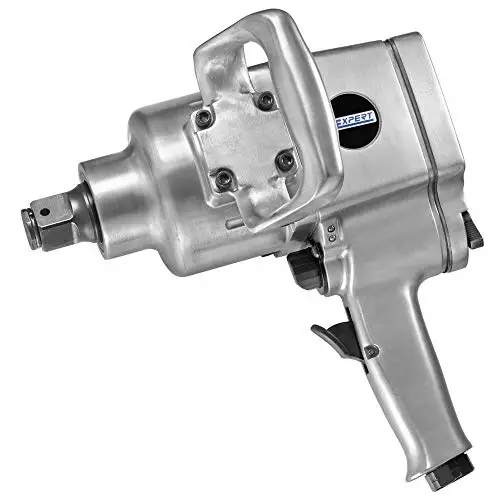
By the way, if it is possible to provide the wrench with dry compressed air in production, then it is still necessary to install an air preparation unit in front of it. In this case, it includes a pressure regulator and a lubricator.
The next question concerns the installation of an air handling unit in the pneumatic line. Whatever the geometry of the pneumatic line, there are two main ways to install air handling units in it: above the main pipe and below the main pipe.
What is the advantage of installing the unit above the pipe? In this case, the vertical outlet upwards, to which the air preparation unit is then attached, naturally prevents condensate from entering the unit.
If the block is installed under the main pipe, then a vertical downward bend is made from the pipe, into which a tee cuts, and a block is connected from this tee through a separate pipe. And in order to exclude the "bay" of the block with condensate, the vertical outlet from the main pipe is continued even lower, and completed with a valve to remove condensate.
In both cases, the connection of the air preparation unit to the pneumatic line is made through a shut-off ball valve. This will allow, if necessary, to quickly disconnect the unit from the pipeline.
Most AHUs are equipped with a Y-connector that allows two nutrunners to be connected to them at the same time. And to ensure high-quality lubrication of the wrench, the length of the flexible hose should not exceed 5 meters.
Pneumatic impact wrench is powered by an air compressor and contains impact and rotary mechanisms. The main parts of an impact wrench are:
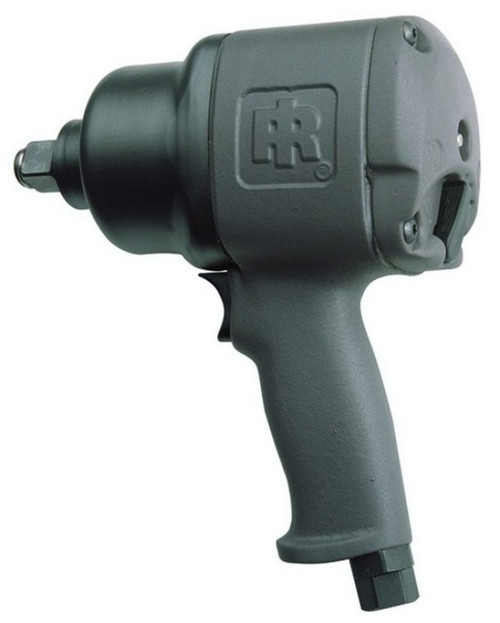
Various models of pneumatic impact wrenches
In addition to the main pistol grip, the tool can be equipped with an additional detachable handle that can be fixed in different positions for easy holding.
The pneumatic impact wrench is connected through a fitting to an air compressor, the pressure of which must not exceed the value specified in the operating instructions for the device. When the trigger is pressed, the compressed air supplied to the rotor blades causes it to rotate. Through the frame and hammers, the rotation of the rotor is transmitted to the stop and the nut or bolt is unscrewed or screwed into its seat.
If a lot of force is required to turn the nut, then the stop does not rotate, and the hammers, turning, deviate back and engage with the stop. During the next revolution, the hammers gain inertia and, approaching engagement, hit the stop in the direction of rotation. The blows are repeated until the nut begins to turn. Thus, the impact wrench allows you to quickly and easily unscrew and tighten tight bolts and nuts. Due to the low weight (no more than 2.6 kg), the tool can be held with one hand.
The blows are repeated until the nut begins to turn. Thus, the impact wrench allows you to quickly and easily unscrew and tighten tight bolts and nuts. Due to the low weight (no more than 2.6 kg), the tool can be held with one hand.
Pneumatic wrench device
By switching the air channels on the rotor blades, you can change the direction of its rotation, which allows you to use the wrench, both for tightening and loosening bolts and nuts. Reversing the direction of rotation is achieved by simply turning the switch knob to the desired position.
When choosing a tool, pay attention to the following indicators:
Not all wrenches have an impact mechanism, there are simple devices with a uniform rotation of the rotor. Percussion devices create a pulsed rotational action on the unscrewed bolt, which allows you to effectively break it from the "stuck" place.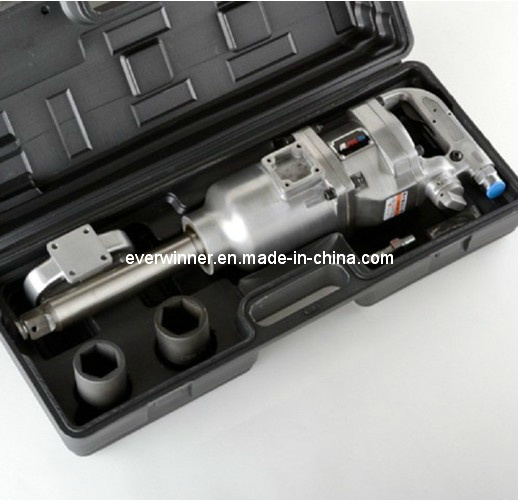 The mechanism gives a significant increase in labor productivity with the time spent on one fastener no longer than 5 seconds. Such tools are widely used in auto repair shops, vulcanization centers, agricultural machinery auto repair enterprises, aviation technical bases and railway depots.
The mechanism gives a significant increase in labor productivity with the time spent on one fastener no longer than 5 seconds. Such tools are widely used in auto repair shops, vulcanization centers, agricultural machinery auto repair enterprises, aviation technical bases and railway depots.
The presence of a reverse mechanism allows the use of a wrench not only for dismantling, but also in the assembly of structural units and assemblies. Shock tightening of threaded connections allows you to achieve the required density without much physical effort on the part of the operator. After using the impact wrench, it is no longer necessary to perform a control tightening of the fasteners. The tool comes with a set of interchangeable heads of different sizes. More durable nozzles made of hardened steel are black. Compared to conventional white heads, they last longer and withstand impact better.
Pneumatic impact wrenches are more used for tightening large sizes of fasteners, and impactless wrenches are more effective for use where precise tightening of fasteners with a strictly defined force is required. If they have to tighten large bolts and nuts (by 24 mm or more), then after the wrench they still need to be tightened by hand.
This parameter can be set up to 8000 rpm. High speeds allow you to increase the speed and power of the tool, but you need to be very careful, as you can strip the threads of small nuts and bolts. The rotor speed can be controlled by a small change in compressor pressure. At the same time, one should not get carried away with high speeds, since this worsens the control of fastener tightening.
Parameter depending on the power of the wrench. A small tightening torque leads to a rapid loosening of the fasteners when exposed to variable loads on them. Too high a tightening torque causes overstressing in the thread, leading to its rapid destruction under load.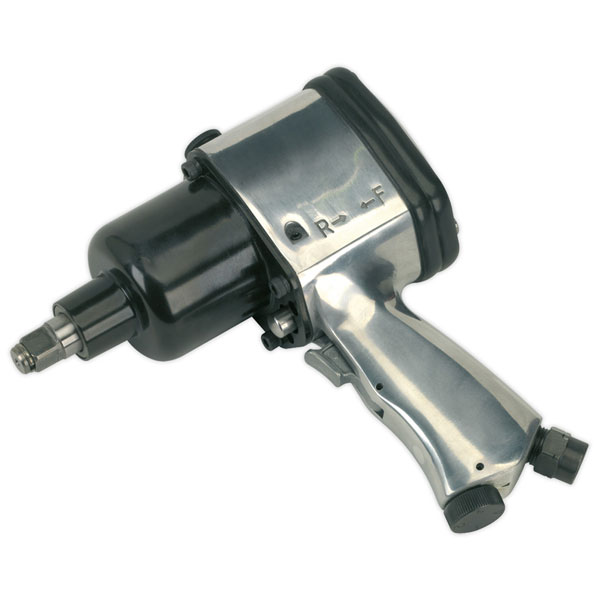 Therefore, you should select a tool with the desired value of the tightening torque.
Therefore, you should select a tool with the desired value of the tightening torque.
This wrench is designed for professional use. Its maximum torque is 5000 Nm
The tightening torque range for tools from different manufacturers is 30-3000Nm. Impact pneumatic wrenches are characterized by a working torque value from 300 to 2200 Nm. If the tool is needed for tightening large-sized fasteners, then more powerful wrenches with a high value of the generated torque should be selected. For tire centers where the installation and removal of rims is carried out, a tool with a working torque of at least 100 Nm is required. In automotive assembly shops, where different torque values are required for different components, adjustable torque wrenches are used.
For fasteners with threads up to 25mm in diameter, the maximum content of which is in passenger cars, a half-inch spindle should be selected. If you want to drive larger bolts with a threaded diameter of 25 to 32mm, then you need an inch spindle, and for threads up to 50mm, you will need a spindle with a diameter of one and a half inches.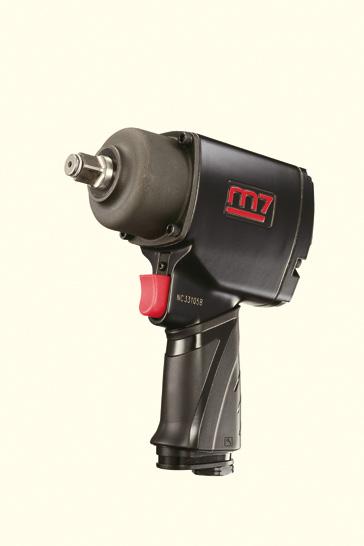 The above 4 characteristics of the tool are interconnected. The higher the speed of the wrench, the greater the tightening torque it creates, therefore, it is designed for large fastener sizes and has a larger spindle diameter.
The above 4 characteristics of the tool are interconnected. The higher the speed of the wrench, the greater the tightening torque it creates, therefore, it is designed for large fastener sizes and has a larger spindle diameter.
In order for the tool to work effectively and not fail prematurely, it must be compatible with an air pressure source. This property is characterized by two parameters - the working air pressure and its flow rate. The ideal condition for the efficient operation of a pneumatic wrench is when the compressor pressure exceeds the working pressure of the tool by 2 bar, and the performance is 1.2-1.3 times greater than the required air flow. If these conditions are met, the tool will work without fail and its declared characteristics will correspond to the real indicators.
For example, we purchased a pneumatic wrench with a working pressure of 6 atm. and an air consumption of 7,5l/sec. Then, for the tool to work, you need a compressor that creates a pressure of 8 atm. with a capacity of at least 9l / sec. Pay attention to the quality of the supplied air. It must meet the requirements that are defined in the operating instructions for the tool for moisture and oil content.
and an air consumption of 7,5l/sec. Then, for the tool to work, you need a compressor that creates a pressure of 8 atm. with a capacity of at least 9l / sec. Pay attention to the quality of the supplied air. It must meet the requirements that are defined in the operating instructions for the tool for moisture and oil content.
Compressors use filters and lubricators to ensure the required air quality. Without this, the wrench will fail much earlier than the service life indicated in the passport. Therefore, you need to keep in mind that when choosing a powerful tool, you may have to buy a stronger and more productive compressor for it.
Manufacturers of modern impact wrenches equip their products with a variety of auxiliary knobs and switches that serve to change various tool characteristics, such as speed and torque controls. However, the complication of the tool can lead to a decrease in its reliability. Therefore, when choosing a wrench with various "bells and whistles", you need to focus on those manufacturers who have already established themselves as manufacturers of reliable equipment. Chinese products are especially attractive for their versatility, however, in terms of reliability, they do not inspire confidence, many functions cease to function within a few weeks of use.
Chinese products are especially attractive for their versatility, however, in terms of reliability, they do not inspire confidence, many functions cease to function within a few weeks of use.
Simple impact wrench. Torque 500 Nm
The appearance and weight of the tool are of great importance when working. They directly affect the productivity of the operator, especially when working on a conveyor. All pneumatic wrenches are divided according to the form of execution into pistol and cylindrical types, the first of which are more common.
Pistol shape has a handle with anti-slip rubberized pads, convenient for holding and operating the tool in a horizontal position. Straight cylindrical shapes are more convenient for working with a vertical tool. The extended shaft allows tightening bolts in recessed and hard-to-reach places of fastenings.
Pneumatic tools are significantly lighter than their electric counterparts.